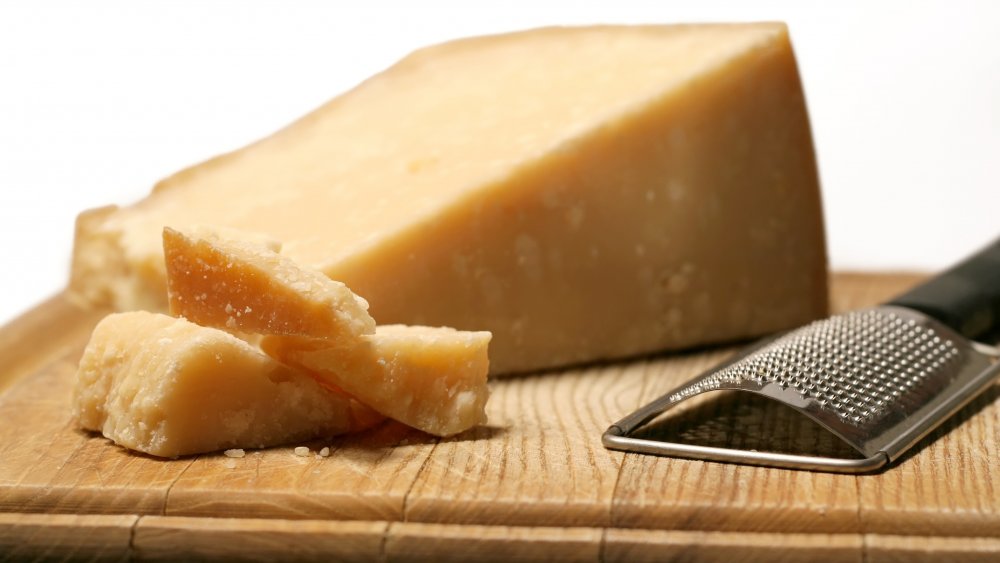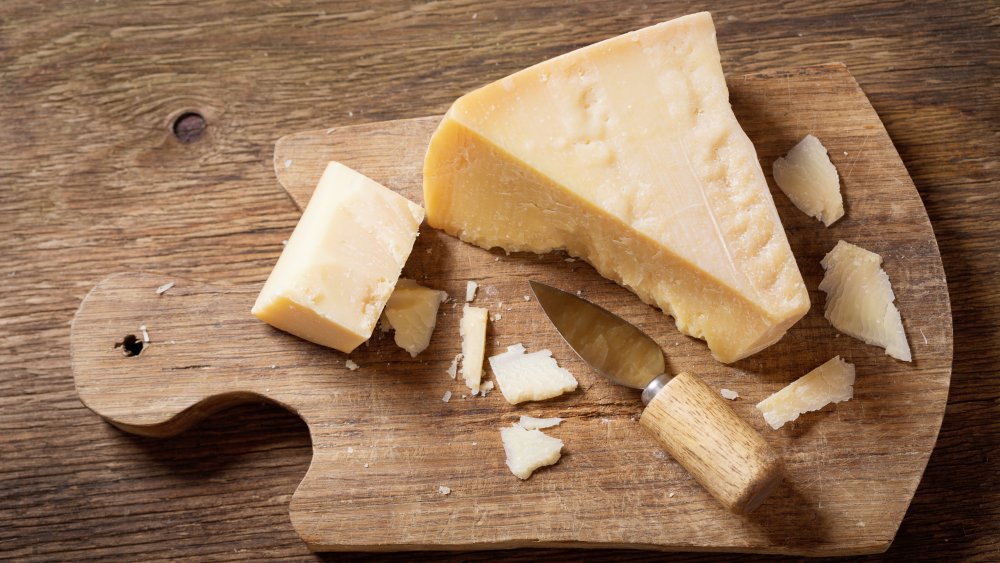The Real Reason You Should Be Saving Your Parmesan Rinds
Parmesan cheese has been around since the Middle Ages with the Benedictine and Cistercian monks being the first to produce it (via Parmigiano Reggiano). Today, Parmesan cheese, or its more formal name, Parmigiano-Reggiano (named for the region where it is exclusively produced in Europe and labeled as a protected designation origin food), is aged for a minimum of 12 months, with three years or more being the norm.
The wheels of Parmigiano-Reggiano are quite large, weighing about 85 pounds each, and are made with 550 liters (approximately 145 gallons) of milk from cows that graze on fresh grass or hay (via Parmigiano Reggiano). Parmesan cheese adds incredible salty, fruity, and nutty flavors to salads, pastas, and risottos, but you may want to think twice before you toss the rind, because Parmesan rinds are the secret seasoning weapon you may not have realized you have.
Parmesan rinds can be used to unleash the powerful taste of this regional cheese in some really creative ways. Like most aged cheese, Parmesan has an outside shell, or rind, that is developed as the cheese is air-dried in its temperature-controlled setting. While the Parmesan rind is hard, it is not made of wax and therefore can be eaten or used to season a myriad of recipes. How do you use the rind to do this (via The Manual)?
Ways to cook with your Parmesan rind
Parmesan rinds can really add depth to the flavor of many dishes. Eric Lees, the executive chef at Spiaggia, an Italian restaurant in Chicago, suggests using the rind to flavor stocks, broths, and sauces. He uses Parmesan rinds when making stock by throwing them into the pot for the last 30 minutes of cooking, or he'll add it to his Bolognese and let it slow cook for six hours. He noted that you do not have to worry about the flavors from the rind overwhelming your dishes because it is quite mild.
You can then take those stocks and broths and use them to make soups and risottos that will be bold and rich in flavor and make your taste buds pop. But don't stop there.
The Parmesan rind can also be used to make your own Parmesan-infused oil, added to steaming vegetables, or cooked under the broiler to soften it up and add it to a salad or yummy baguette. If you aren't sure how you want to use your Parmesan rinds, don't worry, you can always let them dry out, put them in a zip lock bag, and keep them in the freezer until you are ready (via HuffPost).

